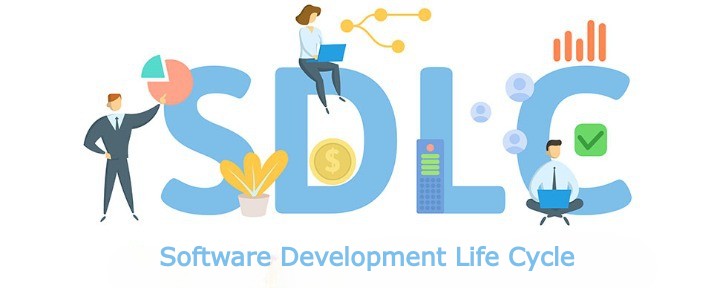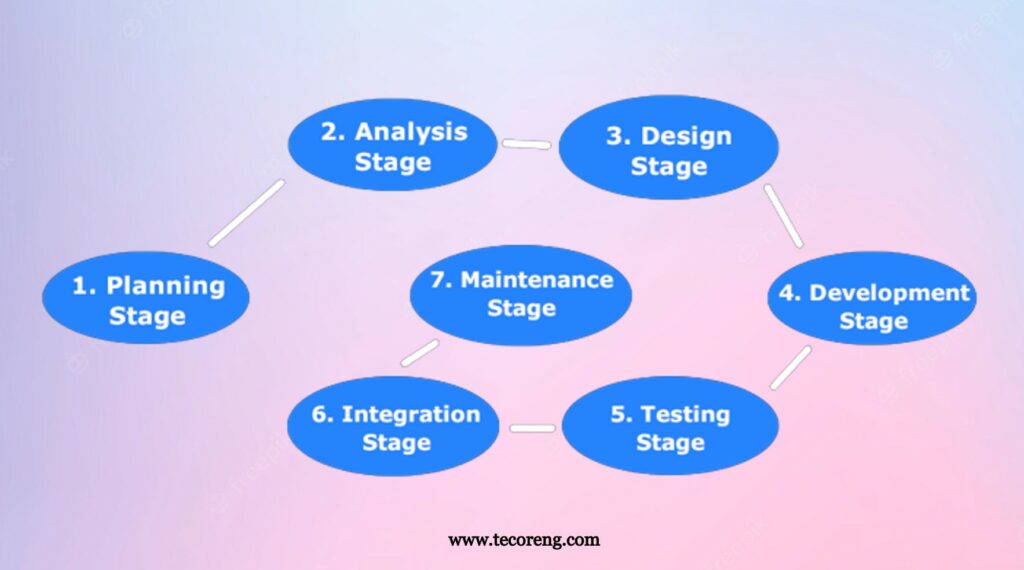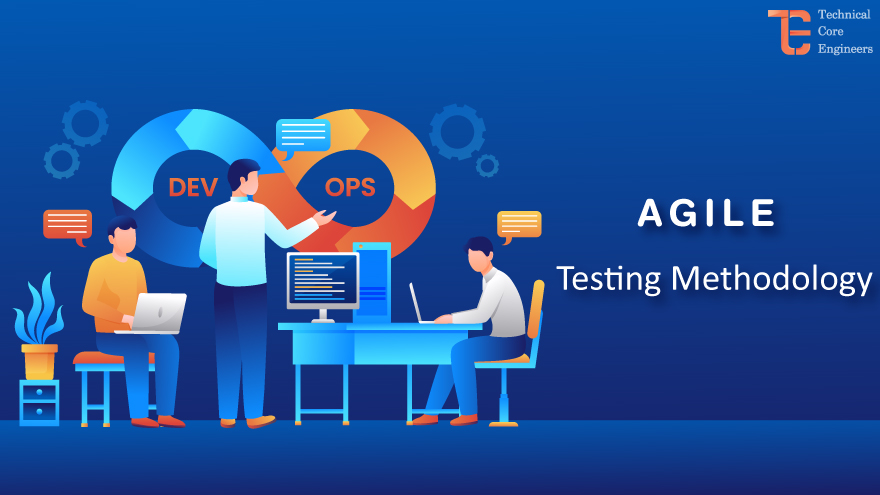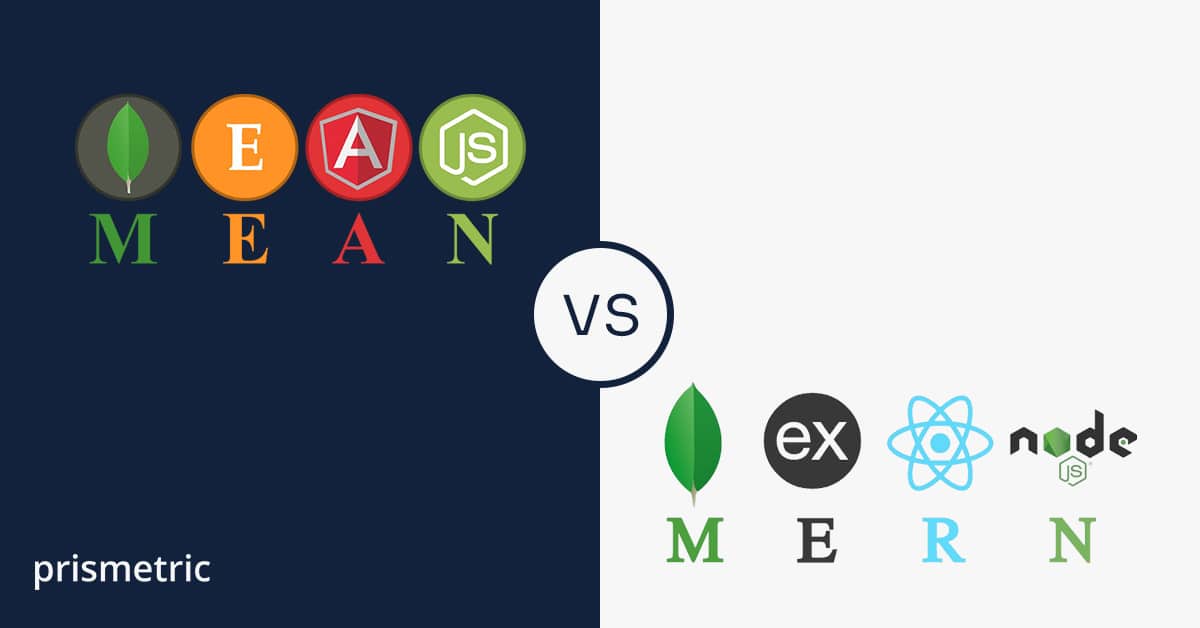- Home
- Software Development
- Software Development Life Cycl ...

Do you know how many IT projects fail and why? The percentage revolves around 14%. There are simple reasons behind the failures like
- Such as lack of time
- Testing
- Not having proper software development planning
- Unspecific requirements
- The involvement of many people
- Wrong estimation of budget
And much more like these. Every business or brand’s objective is to serve its customers and having certain strategies and skills during the development phase and software development planning is just the exact key you need for the successful accomplishment of your desired goals.
Now the main question arises, how will you choose which software development process is right for your business? Then your search ends here Because Technical Core Engineers will describe the whole process and its required model. So, Let’s get started.
What Is Software Development?
The software development lifecycle is the process programmers use to build software programs. This process is also known as Software Development Life Cycle (SDLC).
This process provides an international standard that software companies can use to build and improve their computer/software programs. The SDLC aims to produce high-quality software or programs. The software plays an integral role in marketing all of these possible.
But, luckily you can always find the best software development company that can help you with planning according to your requirements.
However, it also consists of various software design process steps, including requirement analysis, research, planning, designing a data and process flow, comprehensive testing, creating technical documentation, debugging, and deploying the software.
Software Development Life Cycle (SDLC):
SDLC is a process for a software project, within a software organization. It consists of a detailed plan describing how to develop, maintain, replace and alter the specific software. The life cycle defines a methodology for improving the quality of software and the overall development process.
Moreover, the software design process steps remain constant, irrespective of implementing the software development methodology.
The following diagram is a graphical representation of the various phases of a typical software development life cycle.

1. Planning and Requirement Analysis:
These steps are important for the software development process. And that can be performed by a senior person on the team. This information is used to plan the basic project approach and to conduct a product feasibility study in the economical, operational and technical areas.
2. Define Requirements:
Once the requirements analysis is done the next step is to clearly define and document the product requirement and get them approved by the customer or the market analysis. This is done through an SRS (Software Requirement Specification) document which consists of all the requirements
3. Design and Prototyping:
An approach clearly defines all the architectural modules of the products along with its communication and data flow representation with the external and third-party modules. An approach clearly defines all the architectural modules of the products along with its communication and data flow representation with the external and third-party modules.
4. Software Development:
The development phase only comes into the software process once you are ready with your final requirements, wireframe, prototype, and sure about UX design. Many important documents are created, including the design documents vary from simply not having capable in-house resources or skills.The development phase only comes into the software process once you are ready with your final requirements, wireframe, prototype, and sure about UX design. Many important documents are created, including the design documents vary from simply not having capable in-house resources or skills.
5. QA and Testing:
Quality is the key to the success of any software product. Hence, our testing and quality assurance stage involves various types of testing, such as system testing, bug fixing, user acceptance testing (UAT), and test report generation.
Once the product is ready with all the features and functionalities, it’s deemed ready for testing. It’s performed iteratively as issues are found, corrected, and verified.
6. Deployment:
Deployment is one of the important stages in SDLC. Once the developers are done with coding and testing, the next development phase is to deploy or publish your software on the given servers.
As the product is now available on the market to potential customers, it’s named an Alpha release. This is because a limited set of users use the product and give their feedback. Once all the feedback is gathered, the required changes are updated to the software for seamless performance and then released as a Beta version Now, more user base will have access to the software product.
7. Maintenance and Updates:
The last stage is just the beginning of another. And this is applicable after the deployment stage as well.
While using the software product, some users may also find bugs and errors. Moreover, they will also request new features and different functionalities for a seamless experience.
And the software requires platform upgrades and software maintenance. Hence, as development and suggest changes whenever required.
SDLC Model:

There is some common software development process methodology:
- Waterfall Model
- Agile Model
- DevOps Model
- Iterative Model
There are various software development life cycle models defined and designed which are followed during the software development process. These models are also referred to as software development process models. Each process model follows a series of steps unique to its type to ensure success in the process of software development.
Waterfall Model:
The waterfall model is one of the traditional development methodologies. As each step completes the project spills over to the next stage. In its most basic form, you can think of the waterfall model as following each step of the SDLC in sequence-you have to finish each one sequentially before moving on.
Some people also like to call this a “plan-driven” process as to complete a project, you first need to know everything that needs to be done and in what order. Hence the name “Waterfall” as each section flows into the next one.
Agile Model:
The Agile software development process (and its most popular methodology, Scrum) opt for an iterative and dynamic approach to development.
As opposed to the Waterfall process’ strict, sequential flow, in Agile, cross-functional teams work in “Sprints” of 2 weeks to 2 months to build and release usable software to customers.
There’s a lot more to Agile than just this (which we cover in this Guide to implementing Agile and Scrum). However, here’s a simple example of how it might look in practice. Let’s say you’re building a new feature for one of your products that could have X, Y, and Z features. Rather than spend months building everything, you would spend 2-4 weeks creating the bare minimum that is both useful and usable (in what’s called an “Agile Sprint”) and then release it to your customers.
DevOps Model:
DevOps is one of the most important methodologies that bring Development teams (Dev) and information technology operations (Ops) together in the entire SDLC, from design to production support.
DevOps requires continuous communication and collaboration between these teams in the organization. DevOps includes Continuous Integration and Continuous Delivery or Continuous Deployment (CI/CD) tools, focusing on task automation.
Iterative Model:
The incremental and iterative software development processes are a middle-ground between the structure and upfront planning of the Waterfall process and the flexibility of Agile.
While both follow the idea of creating small bits of software and exposing them to users for feedback, they differ in what you create during each release.
Final Thought
As technology is evolving at a fast pace and is driving software company to move forward and work at a fast pace, the software development processes are meant to be made sure that an app is therefore completely tested as a whole particular system. With the help of these software development processes. To create such an impact in the market, each organization should very carefully choose their software which will go hand in hand with their goals.





